Maits Rest – A Small Taste of the Rainforest, Australia

The Great Ocean Walk has many special, not-to-be-missed sights along its route. One of our favourites — other than the Great Ocean Walk, of course! — is Maits Rest. This beautiful 800m rainforest walk is only 17kms from Apollo Bay, alongside the Great Ocean Road.
If you are short on time, are exploring with the kids, or if the ‘old legs’ just can’t walk as far as they used to, Maits Rest is the perfect way to experience a taste of the rainforest.
Even if you’ve trekked the whole 104kms of the Great Ocean Walk trail, we highly recommend a visit if you’re near Apollo Bay.
At Walk91, we love sharing the wonders of the Great Ocean Walk with fellow trekkers. Whether you’re a long-distance walker or like to dip in and out of the trails that southern Australia has to offer, our self-guided tours of the Great Ocean Walk can be customised to meet your needs.
If you’re planning to visit our neck of the woods but want a little help with planning, get in touch! Our husband-and-wife team has been sharing the splendid sights of Victoria since the early 2000s. But, for now, read on for our Visitor’s Guide to Maits Rest rainforest walk.
How Difficult and How Long is Maits Rest Rainforest Walk?
Maits Rest rainforest walk is 800m and takes roughly 30 minutes to walk its well-marked circuit.
But, by the time you’ve stopped to rest on the benches scattered along the trail; listened to the birds calling; and enjoyed the sound of the water dripping through the tall ferns and trickling under the footpaths, you could be there a lot longer!
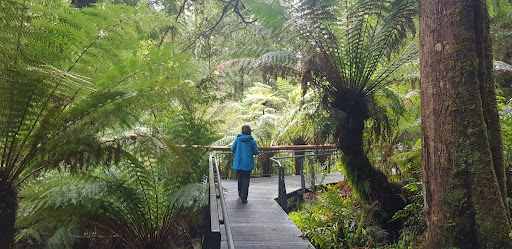
The track has recently been refurbished and there is a metal grid underfoot along most of the way. This helps if you’re walking with kids in prams or older family members wanting to enjoy the trail.
The full track can be difficult with wheelchairs, as there are a few sections that aren’t as flat as the gridwork. The walk is listed as Grade 2, or an easy/gentle slope by Parks Victoria.
There is a car park at Maits Rest rainforest walk, just off of the Great Ocean Road, making it easy to access from the car.
There are no toilets located in the car park and dogs are not permitted on the trail.
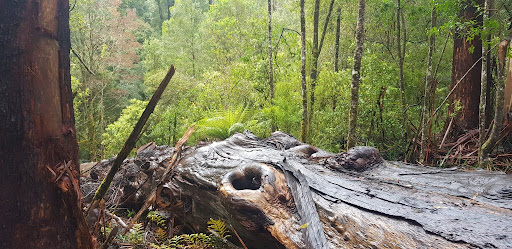
How Did Maits Rest Rainforest Walk Get Its Name?
Next on our Visitor’s Guide to Maits Rest is the history behind its name.
In 1914, around the time of World War I, Maitland Bryan was the Otway region’s first forestry officer. On his regular patrol from Apollo Bay to Horden Vale or the Lighthouse Road to Cape Otway, Mait would rest his horse in this beautiful patch of rainforest.
You can imagine how quiet it would have been then, with only a dirt track from this trail to Apollo Bay. The road from Apollo Bay was only sealed in the 1980s and this route was opened in 1993 after it had been made safer for walkers to visit its otherworldly atmosphere.
For more info on the history of our area, be sure to pop into the Apollo Bay Museum.
Maits Rest and Cape Otway’s Dinosaur Past
Maits Rest rainforest walk is more than just towering trees and bushy ferns, so let’s look a little deeper under the leaves. This fragile ecosystem is a perfect example of a cool-temperature rainforest and is a rare, accessible pocket of ‘unlocked’ forest in the Otway Ranges.
Walking around Maits Rest you will see hundreds of tree ferns and ancient plants.
More than 100 million years ago, these plants’ relatives would have grown here when dinosaurs roamed around the Otways.
Gondwana, the supercontinent, was formed about 550 million years ago. Back then, Australia was part of this land mass before it spilt up into what we now know as continents. It’s amazing (and hard!) to imagine Antarctica covered in tree ferns like the ones in Maits Rest.
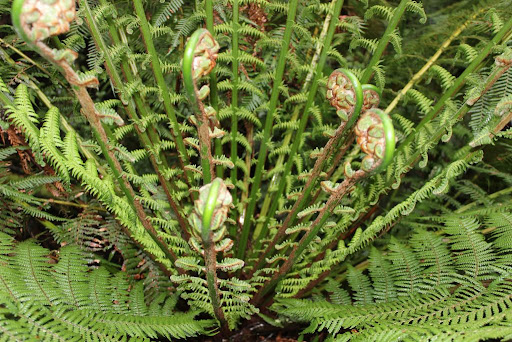
On your trek through Maits Rest, try and spot the two different types of fern trees – the slender tree fern (Cyathea cunninghamii) and the soft tree fern (Dicksonia antarctica).
It is exciting to think that the volcanic rocks and settlements from this period contain the remains of early mammals, plants, and dinosaurs.
Below is a fossilised claw of a carnivorous meat-eating dinosaur that lived in this area around 110 million years ago. It was found in Cape Otway by researchers and volunteers from museums Victoria in 2014. The dinosaur was called Australovenator, or the Southern Hunter.
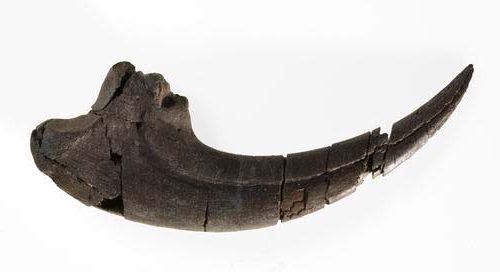
The Otway Claw (Source | License)
Maits Rest and the Gold Rush — A History
The discovery of gold in the 1850s kickstarted rapid immigration to Australia. It was a time of huge growth in Victoria, as there was a massive demand for land to grow food and timber for buildings. Railway tracks were built quickly alongside ships and housing.
In response to this demand, Apollo Bay‘s first sawmill opened in 1852.
Native hardwood forests were being logged way faster than they could ever grow. These snapshots from the Apollo Bay Museum show the thriving timber trade at Eliot River in the late 1800s and early 1900s.
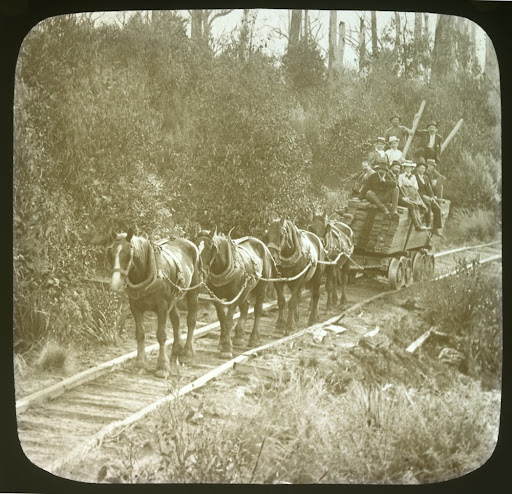
Credit: Apollo Bay Museum
The industry grew and, within 100 years of the discovery of gold, nearly all existing giant native mountain ash trees had been locked in the Otway ranges. They were felled manually with cross-cut saws and axes.
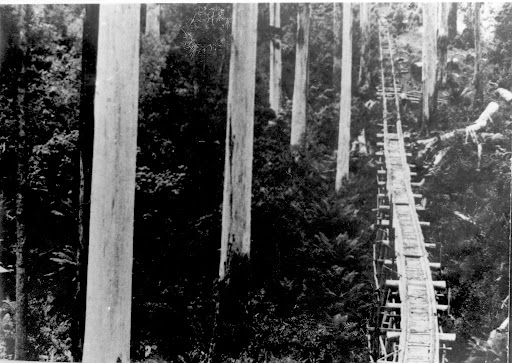
Credit: Apollo Bay Museum
The Trees at Maits Rest Rainforest Walk in Cape Otway
Flowering Mountain Ash Trees at Maits Rest
At Maits Rest, you can stand next to the world’s tallest flowering plant! The giant mountain ash eucalyptus (Eucalyptus regnans) is over 200 years old and can grow up to 100 m tall.
The tallest recorded mountain ash in Australia is named Centurion. Located in Southern Tasmania, Centurion is believed to be 400 years old and stands 110m tall.
The height of these trees is very impressive, as their seeds are only the size of a grain of sand!
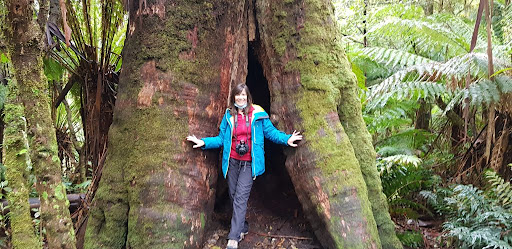
Myrtle Beech Trees at Maits Rest
The myrtle beech (Nothofagus cunninghamii) once grew across the land mass of Gondwana. These trees still grow in South America and New Zealand. Fossilised beech trees have also been found in Antarctica!
As you walk around Maits Rest, look out for their finger-nail-sized leaves scattered on the ground — a sure sign of a myrtle beech. Then enjoy looking up at their beautiful canopies!
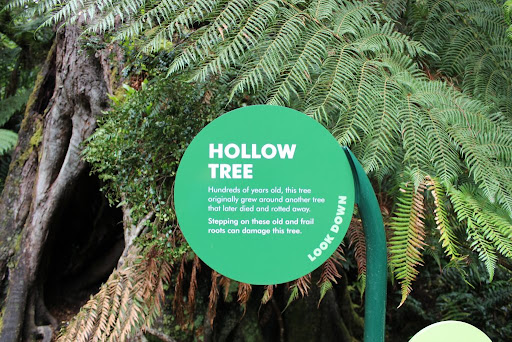
One of Maits Rest’s myrtle beech trees is over 200 years old and is made up of two or three trees that have grown together over time. It is so unusual that it is listed as a tree of significance on the National Trust of Australia’s register.
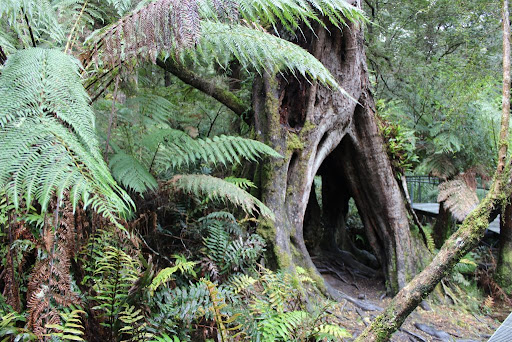
Maits Rest and Endangered Species
Keep your eyes peeled when you are walking around the trail for signs of moss bugs (Peloridiidae). They are only two to four millimeters long and originated 153 million years ago in myrtle beech forests. This very special bug is found on continents on both sides of the Pacific Ocean.
Meat-eating land snails also live at Maits Rest, so be careful where you tread on the trail! The endangered Otway Black Snail (Victaphanta compacta) lives here.
It is very delicate with a thin black glossy shell that measures up to 25 mm in diameter. You should feel very lucky if you see one!
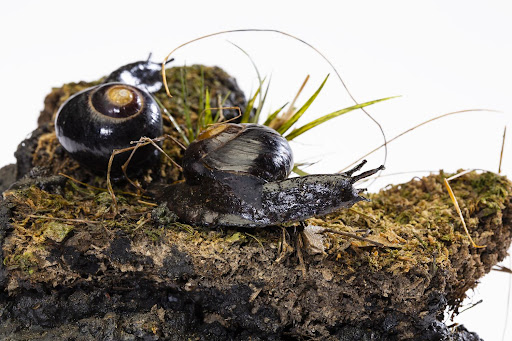
The Otway Black Snail (Source | License)
We hope our Visitor’s Guide to Maits Rest rainforest walk will encourage you to visit. Apollo Bay and Cape Otway locals have always loved this spot.
As a result, Maits Rest was one of the first areas protracted in the Otway ranges before the declaration of the Cape Otway National Park and, more recently, the Great Otway National Park in 2010.
There is much more wonderful rainforest to explore on the Great Ocean Walk trail. If you’d like to go a little further, Walk91 has curated ranging from 3 Day Hiking Tours of the Great Ocean Walk to 7 Day Self-Guided Great Ocean Walks. Each trip varies in difficulty, so we can find the perfect walk for everyone.
Get in touch if you have any questions before your walking adventure. Walk91 would also like to acknowledge the traditional custodians of the Otway, the Gulidjan and Gadubanud peoples. We acknowledge and pay our respects to Elders past, present, and future.